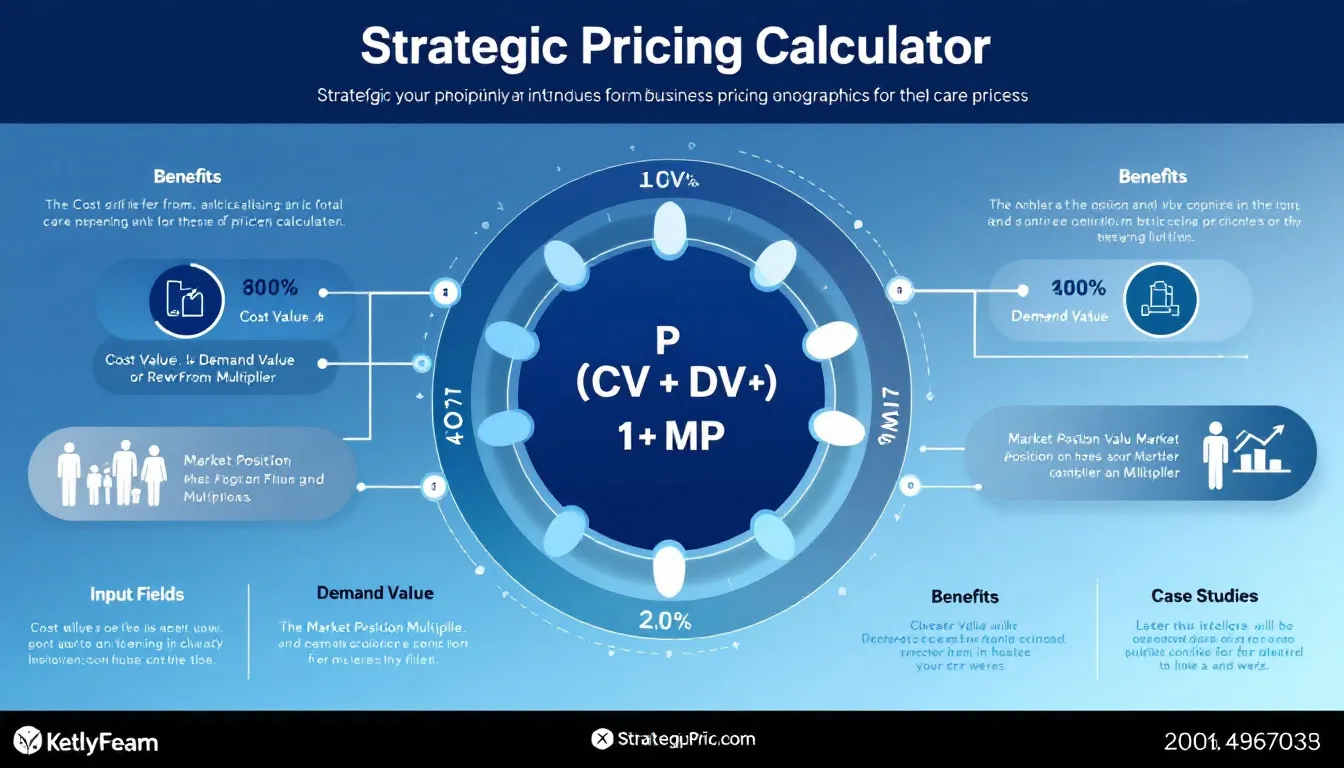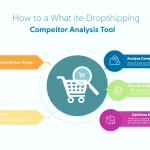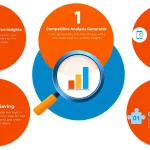Is this tool helpful?
How to Use the Pricing Strategy Calculator Effectively
The Pricing Strategy Calculator is designed to help businesses develop an optimal pricing strategy based on their unique market position and value proposition. Here’s a detailed guide on how to use each field:
Step-by-Step Input Guide
- Type of business or industry: Enter your specific business category. For example: “Luxury watch manufacturing” or “Online fitness coaching platform”
- Description of product or service: Provide comprehensive details about your offering. Focus on key features and benefits. Example: “Handcrafted leather accessories with lifetime warranty” or “Customized meal planning software with AI-powered recommendations”
- Target market description: Define your ideal customer segment with specific demographics, psychographics, and behaviors. Example: “High-net-worth professionals aged 35-55 in metropolitan areas” or “Health-conscious millennials with disposable income”
- Competitor pricing information: Include current market rates and pricing models. While optional, this information enhances accuracy. Example: “Premium competitors: $200-300 per unit, Mid-range: $100-150 per unit”
- Unique selling propositions: List distinctive features that set your offering apart. Example: “Patented ergonomic design, eco-friendly materials, 24/7 concierge support”
Understanding the Pricing Strategy Calculator
This advanced tool combines market analysis, competitive positioning, and value-based pricing principles to generate tailored pricing recommendations. It helps businesses align their pricing strategy with market expectations while maximizing profitability and market share.
Core Components of Strategic Pricing
- Market positioning analysis
- Value-based pricing considerations
- Competitive differentiation factors
- Target market purchasing power
- Brand premium potential
Benefits of Using the Pricing Strategy Calculator
1. Strategic Advantage
The calculator provides data-driven insights that help businesses:
- Identify optimal price points that balance profitability and market acceptance
- Leverage unique selling propositions effectively
- Develop competitive positioning strategies
- Maximize value perception among target customers
2. Market Intelligence
Users gain valuable insights into:
- Market dynamics and pricing trends
- Competitive landscape analysis
- Customer value perception mapping
- Price elasticity considerations
3. Revenue Optimization
The tool helps optimize revenue through:
- Value-based pricing implementation
- Premium positioning opportunities
- Market penetration strategies
- Price skimming potential analysis
Solving Specific Pricing Challenges
Market Entry Pricing
For new businesses entering competitive markets, the calculator provides strategic guidance on:
- Initial price positioning
- Market penetration strategies
- Value communication approaches
- Competitive response analysis
Premium Positioning
Businesses targeting premium segments receive recommendations on:
- Price premium justification
- Value proposition alignment
- Brand positioning strategies
- Premium market entry tactics
Practical Applications and Examples
Case Study 1: Luxury Fashion Boutique
A luxury fashion boutique used the calculator to optimize pricing for their handcrafted accessories:
- Business Type: High-end fashion retail
- Product: Artisanal leather handbags
- Target Market: Affluent female professionals, 30-50 years
- USP: Limited edition designs, sustainable materials
- Result: Successfully implemented a premium pricing strategy 30% above market average while maintaining strong sales
Case Study 2: SaaS Platform
A software company utilized the calculator for subscription pricing:
- Business Type: B2B SaaS
- Service: Project management software
- Target Market: Small to medium enterprises
- USP: AI-powered automation, integrated analytics
- Result: Developed a tiered pricing structure that increased customer lifetime value by 45%
Frequently Asked Questions
Q: How often should I review my pricing strategy?
Regular reviews are recommended quarterly, with additional analysis during significant market changes, new competitor entries, or product updates.
Q: Can I use this calculator for multiple product lines?
Yes, the calculator can be used separately for different product lines, allowing for customized strategies across your portfolio.
Q: How should I factor in seasonal variations?
Include seasonal considerations in your product description and competitor pricing information to receive more accurate recommendations.
Q: What role does brand positioning play in pricing strategy?
Brand positioning significantly influences pricing strategy and should be clearly reflected in your unique selling propositions and target market description.
Q: How do I balance competitive pricing with profitability?
The calculator considers both market competitiveness and value delivery to suggest optimal price points that maintain profitability while remaining competitive.
Q: Should I include indirect competitors in the competitor pricing information?
Yes, including indirect competitors provides a broader market perspective and helps identify positioning opportunities.
Advanced Pricing Considerations
Value-Based Pricing Formula
The calculator incorporates value-based pricing principles using the following formula:
$$P = (CV + DV) * (1 + MP)$$Where:
- P = Optimal Price Point
- CV = Core Value (base cost + standard margin)
- DV = Differentiated Value (unique features and benefits)
- MP = Market Position Factor (brand premium potential)
Market Position Multiplier
The market position multiplier is calculated using:
$$MPM = (USP_{score} * TM_{strength} * CM_{factor})$$Where:
- USP_score = Unique Selling Proposition Strength (1-5)
- TM_strength = Target Market Alignment (0.8-1.2)
- CM_factor = Competitive Market Position (0.7-1.3)
Important Disclaimer
The calculations, results, and content provided by our tools are not guaranteed to be accurate, complete, or reliable. Users are responsible for verifying and interpreting the results. Our content and tools may contain errors, biases, or inconsistencies. We reserve the right to save inputs and outputs from our tools for the purposes of error debugging, bias identification, and performance improvement. External companies providing AI models used in our tools may also save and process data in accordance with their own policies. By using our tools, you consent to this data collection and processing. We reserve the right to limit the usage of our tools based on current usability factors. By using our tools, you acknowledge that you have read, understood, and agreed to this disclaimer. You accept the inherent risks and limitations associated with the use of our tools and services.







